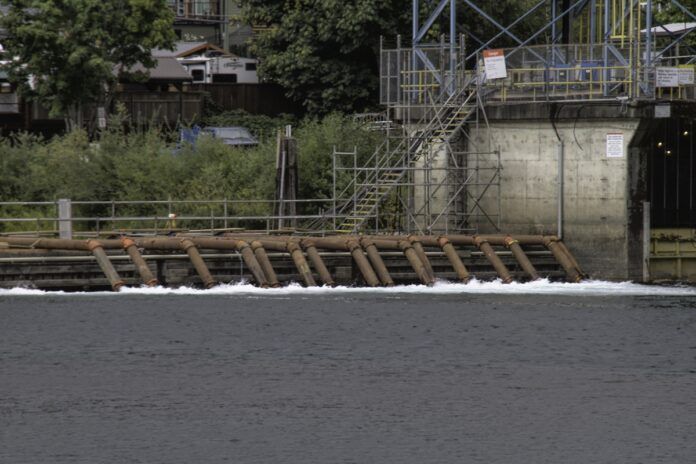The Strategic Priorities Director of the Cowichan Watershed Board says 2023 has been a year of “hard decisions” regarding management of the Cowichan River.
Tom Rutherford says the first difficult choice was to reduce the flow of water from Cowichan Lake into the river in late June, dropping it from seven cubic metres per second to 4.5 CMS.
Then in mid-July, dead fish fry were discovered in the river downstream from Skutz Falls.
An examination of the fish that were recovered indicate the die-off was caused by cumulative stress.
“Low water flows, high temperatures,” says Rutherford, “lead to a growth of algae, and when the algae starts to decompose it takes more oxygen out of the water and we actually ended up with a fish kill.”
According to Rutherford, “we’ve been balancing on that knife edge for a number of years,” and what happened in July was inevitable.
Then came the difficult decision to pump water over the weir to maintain the level of the river for migrating salmon.
“That decision is not without its risks as well,” he says, “because we’re lowering the lake level to lower than it’s been, arguably, in geological time, which is having impacts on that productive shallow water perimeter around the lake,” which he says is good habitat for fish.
The operation began on September 13 and the water being pumped across the Cowichan Lake weir should be enough to support spawning salmon.
Rutherford says the conditions in the Cowichan River are not ideal, but should be adequate.
He says Chinook are in the river now, but spawning doesn’t usually occur until October, “so if the fish can get in the river and find somewhere to hold where they are somewhat protected from predation, the spawning activity generally picks up next month.”
Rutherford says the pumping operation puts our heritage river on “life support.”






